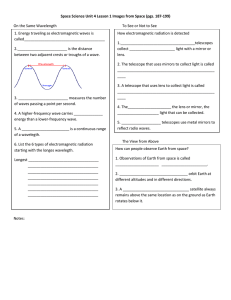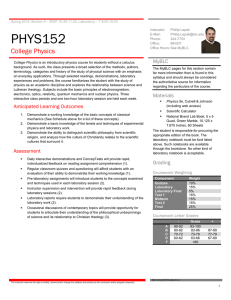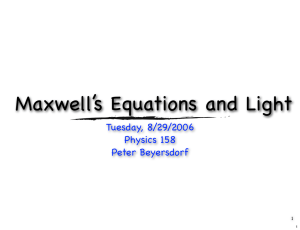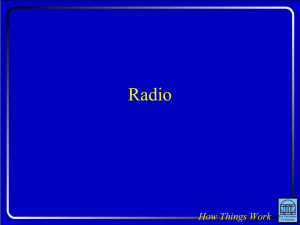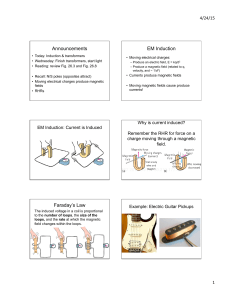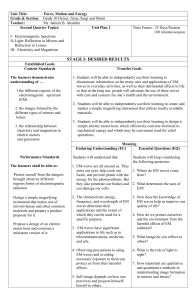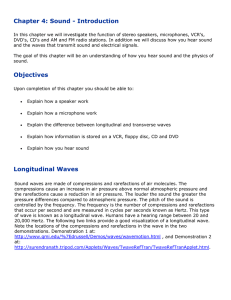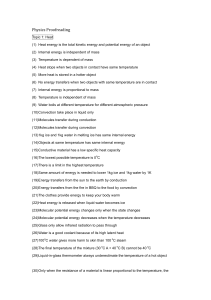PHY 108 Outline 1. Harmonic Motion
advertisement
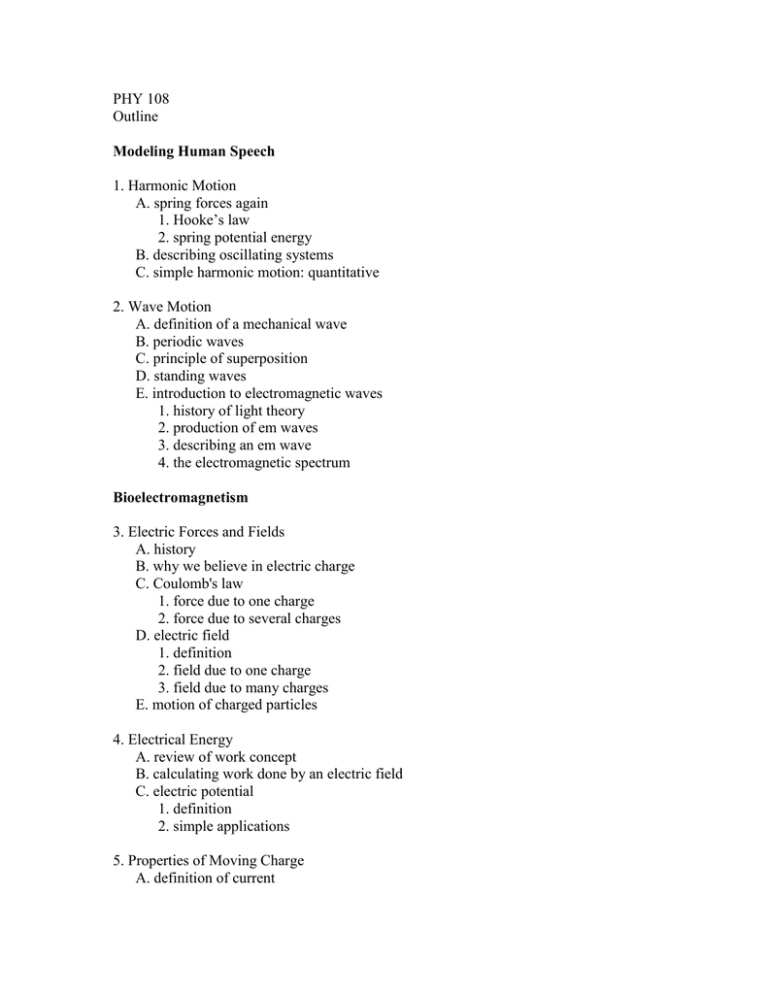
PHY 108 Outline Modeling Human Speech 1. Harmonic Motion A. spring forces again 1. Hooke’s law 2. spring potential energy B. describing oscillating systems C. simple harmonic motion: quantitative 2. Wave Motion A. definition of a mechanical wave B. periodic waves C. principle of superposition D. standing waves E. introduction to electromagnetic waves 1. history of light theory 2. production of em waves 3. describing an em wave 4. the electromagnetic spectrum Bioelectromagnetism 3. Electric Forces and Fields A. history B. why we believe in electric charge C. Coulomb's law 1. force due to one charge 2. force due to several charges D. electric field 1. definition 2. field due to one charge 3. field due to many charges E. motion of charged particles 4. Electrical Energy A. review of work concept B. calculating work done by an electric field C. electric potential 1. definition 2. simple applications 5. Properties of Moving Charge A. definition of current B. drift velocity C. Ohm's law and the definition of resistance D. resistivity 1. definition 2. relationship with resistanc E. classification of materials in terms of electrical conduction 1. insulators 2. semiconductors 3. conductors 4. superconductors F. effects of temperature on resistance G. power 6. Kirchoff's Laws A. electromotive force 1. definition 2. sources B. equivalent resistance 1. series 2. parallel C. Kirchoff's rules 1. point rule 2. loop rule D. the RC circuit 7. Circuits and Capacitors A. Capacitance 1. what is a capacitor? 2. definition 3. theoretical formula for parallel plates B. equivalent capacitance of combinations 1. series 2. parallel C. energy storage in a capacitor 1. dielectrics 8. Magnetic Fields A. magnetic force on a moving charge 1. a single charge 2. a current of charge B. torque on a current loop by a magnetic field C. motion of a charged particle in a field D. field produced by current-carrying wires 1. long straight wire 2. loop 3. solenoid 9. Faraday's Law A. magnetic flux B. motional emf C. Faraday's law D. Lenz's law 1. description of law 2. connection to energy conservation E. electric generators and motors F. magnetic energy Human Vision 10. Reflection and Refraction A. measuring the speed of light B. Huygen's principle C. law of reflection D. law of refraction 1. index of refraction 2. law of refraction 3. prisms 4. rainbows E. internal reflection 11. Mirrors and Lenses A. real and virtual images B. plane mirrors C. spherical mirrors 1. locating images using graphical techniques 2. mirror equation D. lenses 1. image formation 2. thin lens equation 3. lens maker's equation 4. multiple lens systems E. optical instruments 1. the eye 2. simple magnifier 3. microscope 4. telescope 12. Wave Optics A. interference 1. conditions for it to occur 2. path difference calculations B. two-slit experiment C. thin films D. single-slit diffraction E. polarized light 13. Nuclear Physics A. Natural radioactive decay processes B. Describing radioactive decay – exponential decay Note: This syllabus is subject to change.
